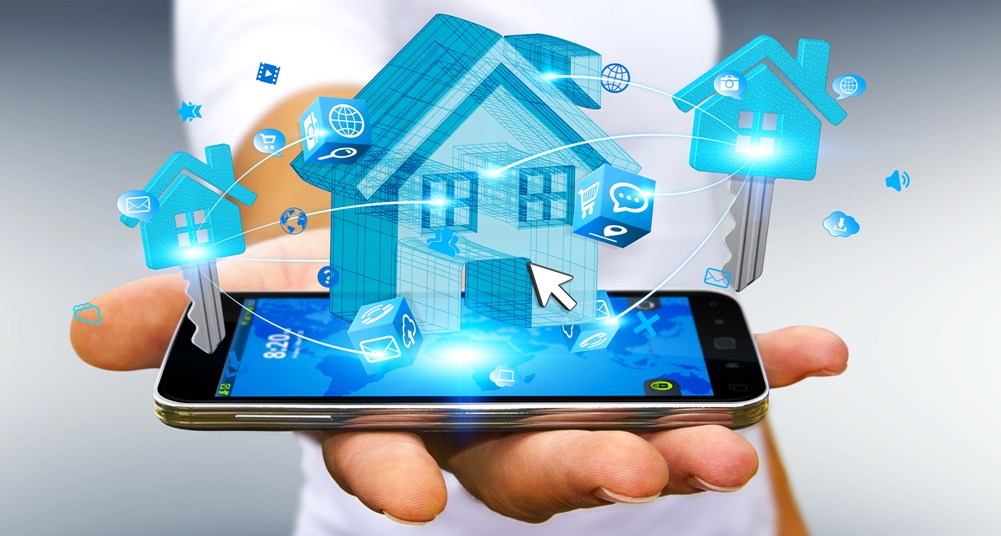Who is Alexa? And why is everyone talking to her? If you don’t know who Alexa is, it’s that automated voice that responds to your requests through your home automation system.
So, what is smart home automation? Smart home automation is this innovative technology that lets you access automatic and electronic devices, whereby you can control your household features and programmable devices.
In other words, you can change the temperature on the thermostat, turn off the lights at home, or schedule the sprinkler systems through the internet from a remotely controllable network.
Besides providing greater safety and security, let’s take a look at several reasons why you should choose smart home automation and the types of smart home sensors required for your home.
Why should you choose a home automation system for your home?
Nowadays, people are more aware of their surroundings and realize that home safety is important. The following are five reasons why you should choose smart home automation for your household.
- Convenience. If you forget to lock the garage door, no need to go back and lock it. Your voice command is programmed in your home automation system, and all you have to do is say, “Alexa, lock the garage door,” and it’s done. Even if you’re not home and in another city, you can access your settings remotely with a wifi connection.
- Comfort. You’re sitting in bed reading a book and ready to go to sleep. But you just remembered that you left the bathroom light on. With smart light bulbs, you don’t have to leave your bed as your voice commands tell your home automation system to turn off the bathroom light.
- Energy efficiency. With home automation, you can set your thermostat on a specific schedule. By turning off the air conditioning or heating when you choose, you end up saving money on energy bills.
- Increased safety. The best thing about home automation is many smart security products make your home safer, such as sensors for doors and windows. These security cameras detect unwanted visitors, smart fire detectors, and carbon monoxide monitors.
- Remote access. Imagine having control of your home by pushing a few buttons on your cell phone, laptop, or tablet, virtually, anywhere in the world at any given moment.

Types of Smart Home Sensors Required for Your Home
There are several types of smart home sensors that offer a variety of functions. Here is a rundown of the most common sensors every home should have.
Motion detector sensors. For detecting unwanted visitors, motion detector sensors can be placed outside of your home, and when it catches movement, it alerts your phone in real-time. You can check your security cameras and make the call to the police if you suspect a burglary is about to happen.
Door and window sensors. If a door or window is left open or ajar, an alert is sent to your cell phone, alerting you to close an open window or door. Door and window sensors also alert you if someone is entering and leaving your house.
Alarm monitoring system. Your alarm monitoring system alerts the security provider’s monitoring station in an emergency, and law enforcement is deployed to your home.
Water temperature and leak sensors. In the case of a leaking pipe, a water leak sensor alerts you on your cell phone to give you plenty of time to call a plumber before it causes damage. You can also set the water temperature of faucets, washing machines, and showers.
Fire and smoke detection sensors. Fires cause serious property damage. But with fire and smoke detection sensors can alert you well before a fire ignites. Once it senses smoke, you get alerted on your phone that an area in your house detected smoke.
Video surveillance system. A video surveillance system monitors activities in your home with a system of cameras and recorders. They can be placed outside and inside your home and alert you of any suspicious activity.
Components of home automation system
Similar to a car needing gas to run, a home automation system needs technology to work. Here are five components that operate home automation systems.

Remote Control – App and voice assistance (Google, Alexa, and Siri). With voice assistants like Google Assistant, Alexa, and Siri, your voice commands the control device to do what you want. For instance, your voice tells Alexa to turn off the lights in the kitchen or disarm the security system when you come home.
Bluetooth. To substitute wifi, you can use BlueTooth technology to control and monitor your home automation systems.
Wifi. The majority of home automation systems use your wifi connection provided by your internet service provider.
Z-wave. Using wifi can slow your web surfing speed, so for those with home automation systems, people use Z-wave as an additional wireless technology that doesn’t disrupt your wifi speed.
Zigbee. Zigbee is similar to Z-wave, as it is a wireless technology that facilitates home automation systems to operate.
Make Your Home Safer With Smart Home Automation
Now that you understand the basic components and uses of smart home automation, here is a recap of its benefits:
- Remote control access. At any time or any location in the world, you have complete control of your home by accessing your cell phone, laptop, or tablet.
- Convenient. Never worry about forgetting to lock the door or turn off the lights; your voice commands do it for you.
- Safe and secure. Think of smart home automation as an extra layer of protection that secures your home and prevents your property from intruders or outside threats.
- Energy-efficient. By setting your thermostat, water temperatures, and lighting, you save money in the long run on energy bills, reducing your consumption and saving energy.
- Comfortable. You can lounge in bed and be comfortable all you like, as your voice commands tell Alexa to turn off all the lights in the house before you go to sleep.






